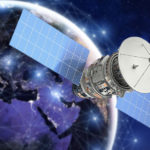For source flow, calculate, the time rate of change of the volume of a fluid element per unit volume and the vorticity.
For source flow, calculate:
a. The time rate of change of the volume of a fluid element per unit volume.
b. The vorticity.
a) Time rate of change of volume of a fluid element per unit volume is given as \frac{1}{\delta v}\frac{D\left ( \delta v \right )}{Dt}=\nabla \cdot \vec{V}In polar coordinates \nabla \cdot \vec{V}=\frac{1}{r}\frac{\partial }{\partial r}\left ( rV_{r} \right )+\frac{1}{r}\frac{\partial V_{\theta} }{\partial \theta}
On transforming by using x=rcos\theta \\y=rsin\theta \\V_{r}=ucos\theta+vsin\theta \\V_{\theta}=-usin\theta+vcos\theta
Let for a source flow u=\frac{cx}{x^{2}+y^{2}}=\frac{crcos\theta}{r^{2}}=\frac{ccos\theta}{r} \\v=\frac{cy}{x^{2}+y^{2}}=\frac{crsin\theta}{r^{2}}=\frac{csin\theta}{r}
Therefore V_{r}=\frac{c}{r}cos^{2}\theta+\frac{c}{r}sin^{2}\theta=\frac{c}{r} \\V_{\theta}=\frac{-c}{r}cos\theta sin\theta+\frac{c}{r}cos\theta sin\theta=0
\nabla \cdot \vec{V}=\frac{1}{r}\frac{\partial }{\partial r}\left ( c \right )+\frac{1}{r}\frac{\partial (0)}{\partial \theta}=0
b) The vorticity
Vorticity is given by \nabla \times V=e_{z}\left [ \frac{\partial V_{\theta}}{\partial r} +\frac{V_{\theta}}{r}-\frac{1}{r}\frac{\partial V_{r}}{\partial \theta}\right ]
Therefore
\nabla \times V=e_{z}\left [ 0+0-0 \right ] \\=0
The flow field is irrotational.



